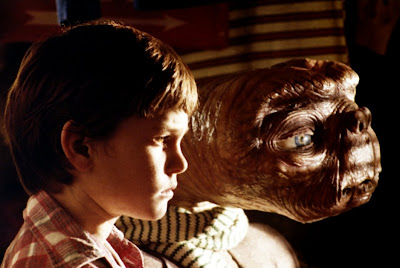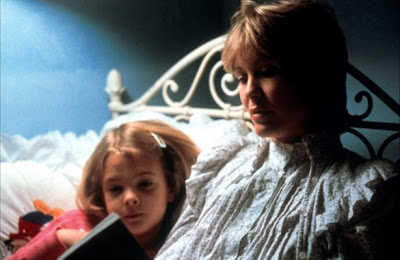This post was originally written for, and posted at, the Women in Film Seattle site. Cool organization, check them out. Anyway, in case you missed it at their site, here it is.
A friend of mine recently read a spec script of mine and was very complimentary. Which was, of course, nice. But his compliments are also the specific kinds of comments I like to hear because they tell me that I have hit the target at which I was aiming.
A friend of mine recently read a spec script of mine and was very complimentary. Which was, of course, nice. But his compliments are also the specific kinds of comments I like to hear because they tell me that I have hit the target at which I was aiming.
When people
like my screenplays, the things they say most often is, “I really feel like I
just watched a movie.” Or they say, “I could really picture it!” And one of my
very favorites, “I couldn’t put it down”. These kinds of comments have been fairly
consistent over the years. Why? How can I get these comments consistently? It’s
because I spent many years reading, starting as a teenager, reading scripts and
learning from them. I stole the techniques of the writers whose work sucked me
into the story and made me see a movie in my head vividly.
It is
astonishing to me how many aspiring screenwriters almost never read
screenplays. Part of the reason for this is that with the advent of
screenwriting software that formats scripts for you, folks no longer feel that
they need to look at screenplays to learn that aspect, which was one of the
main reasons that people ever looked at screenplays to begin with. Most people
I speak to haven’t bothered to read scripts to learn much else, but there is so
much to learn.
When E.T.The Extraterrestrial
came out I was 17. That movie blew me away and I, already a huge Spielberg fan,
became obsessed with the film and screenplay. At this time Spielberg’s most
famous films were Jaws,
Close Encounters of the Third Kind,
and Raiders of the Lost Ark.
The man was a juggernaut. I even had a picture on my wall of Steven Spielberg
with E.T. that I pulled out of an issue of Rolling Stone magazine. I wanted to know what this
guy knew, so I tracked down the scripts to his films and studied them.
 |
| Movie geek that I was this picture of E.T. and Steven Spielberg was on my wall as a teenager. |
I really got
into reading screenwriter Melissa Mathison’s script for E.T. I’m not sure how many times I read
that screenplay. Multiple times. It was while reading this brilliant script
that I learned one of my biggest screenwriting lessons – make every single thing matter. It was a revelation.
It struck me as
I was reading a section of the script where the boy, Elliot, is hiding in a
closet with his alien buddy E.T. as they eavesdrop on Elliot’s mother reading a
bedtime story to his kid sister.
 |
| E.T. heals Elliot's cut finger |
This scene is
interrupted when Elliot cuts his finger, “Ouch!” This is where E.T. learns the meaning of the word ouch and
that is associated with pain. E.T.’s finger lights up and he touches it to the
boy’s finger and heals the cut, after which the pair goes back to eavesdropping
on the bedtime story.
 |
| Elliot and E.T. watch as Elliot's sister is read a story. |
It is a
tender scene of friendship between boy and alien, but it is so much more than
that. I learned something reading the script, seeing the words on the page that
I had not noticed consciously while watching the film.
The story
being read to Gertie, the little girl, as played by Drew Barrymore, is Peter
Pan’s. So what? Think about this: writer Melissa Mathison could have chosen any
story to be read to the little girl. It could have been about Snow White or the
Three Little Pigs or Rumpelstiltskin or Stone Soup,
but it was Peter Pan, the part where the fairy Tinkerbelle is dying. And this
is what the mother is reading when Elliot and E.T. go back to listening in.
“She
thinks she can get well again if children believe in fairies, “ reads the mother.
“Do you believe in fairies,” she continues, “Say quick that you believe.” Gertie says
emphatically that she does believe. “If you believe,” the mother reads, “clap
your hands.” The girl claps earnestly. “And Tink is
saved,” says the mother.
 |
| Mom reads Peter Pan to Gertie |
Here’s
what’s amazing: later in the film E.T. dies and is brought back to life. Mathison
works this fairy-tale imagery of miraculous resurrection into our minds; she
primes us to believe what’s coming later. She did it seamlessly and skillfully.
She did not stop the story to have this tender scene – she continued to tell,
and add, to her story by choosing a story for the mother to read that mattered,
not an arbitrary or generic one.
Not
to be forgotten is the fact that the fairy Tinkerbelle is often depicted as nothing
more than a glowing light, with the light dimmed to indicate when she is dying,
and made to glow brightly again when she is coming back to life. E.T’s light, too, goes out when he is
dying and comes back up when he comes back to life.
 |
| The amazing screenwriter of E.T. Melissa Mathison |
I
often compliment a film I like by saying that it had no fat. What I mean is
that the storytellers used every line, shot, scene, and character to stay on
track with the story in some way. Nothing is wasted.
If
I ever have to pleasure of meeting Melissa Mathison, I will remove my hat out
of sheer respect for the craft of her screenplay.
Today,
I use this lesson I learned from reading the screenplay for E.T. in every story I construct.
This lesson changed the direction of my writing profoundly. I have no doubt
that if you read great scripts, you will learn great lessons. And when you do,
steal them and use them liberally.
P.S. And in case you missed this, I was on the 20/20 Awards podcast discussing one of my very favorite films Norma Rae: And also another film I love Groundhog Day:
P.S. And in case you missed this, I was on the 20/20 Awards podcast discussing one of my very favorite films Norma Rae: And also another film I love Groundhog Day:







